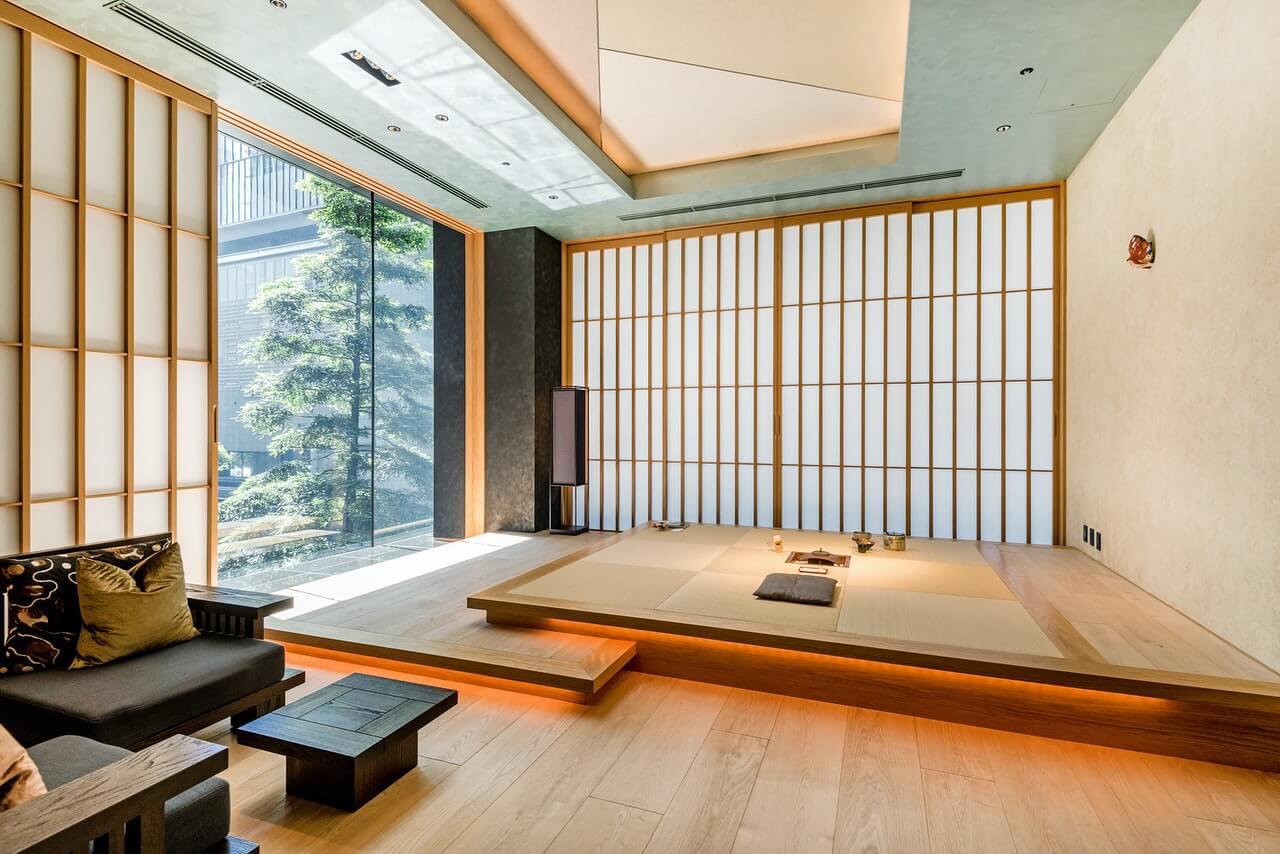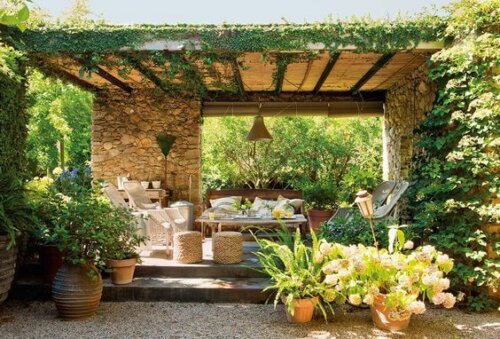The Main Decorative Resources of the Japanese Style

In the world of interior design, there are multiple formulas for designing a home. Generally, we resort to conventional elements in order not to take risks regarding the choice. For this reason, we’re going to break this dynamic and find out what the main decorative resources of the Japanese style are.
The incorporation of certain elements of an exotic nature helps to create a different atmosphere. We’re referring to the application of an aesthetic concept that offers another aspect and supposes a new stimulus for our senses.
It seems that we often only look at the ideas coming from the Western world (Europe and North America); however, we have other options originating from Asia that may represent a new concept for building an internal discourse.
What is the Japanese style?

If we have to point out the main qualities of this style, we should point first to the furniture. In this case, we get rid of those high resources that, in one way or another, reach a considerable altitude in favor of others that work very well at ground level.
Openness is a fundamental principle. The first thing that you’re going to feel is the sensation of spatiality, where a series of parameters committed to the amplitude are established. This can favor generalized luminosity to enhance all the objects that are present.
In turn, we must emphasize that decoration is reduced to the basics; that is, certain components that are based on elementary geometry. Some cases may be, for example, globe lamps, rectangular tables, concave vases, etc.
The possibilities are numerous, hence the particularity of the Japanese style.
The main decorative resources
Although we’ve made an overview of how this style can be, we must pay attention to those resources that define the Japanese sense in the house. For this, it’s essential that we get to know some of the most important aspects more in detail:
- Low tables are present both in halls and in living rooms. Instead of having the traditional Western format surrounded by chairs, in this case, you sit on a cushion on the floor with your legs crossed. Basically, it’s a different way of passing the time.
- In the same way that you’ve worked the table, we can also do it with the bed in the bedroom, as it can be set to a low level. In this regard, more space can be gained without losing the original functionality.
- On the walls, you can place some pictures or mirrors that, basically, are ornamental and don’t have too much of an exaggerated visual appeal. In other words, a certain cordiality must be kept in the set of elements, and harmony between them must be sought without making any of them stand out from the rest.
- Plants are a good option. They contribute from a decorative point of view, but they also refresh and provide a green touch. There are numerous species for interiors, among which bonsai trees stand out especially, whether they’re small or large.
Windows and room dividers

The Japanese style boasts of being bright. This is due to the use of large windows in the openings that allow the entry of natural light. There’s no doubt that this idea is a fundamental concept to enhance interiors.
It’s very important that you maintain contact with the outside world. There’s no need to interrupt your relationship with nature or the outdoors; in fact, this style aims to merge the environments to achieve a certain degree of connection with everything that surrounds it.
At the same time, room separators made with rice paper stand out. They fulfill the purpose of a wall and, in addition, they’re very functional, as you can easily move them whenever you want to. They favor the entry of light and aren’t opaque.
Materials in the Japanese style
The resources that we find in the interiors are made up of a series of materials that don’t attract too much attention. It’s not about producing an exaggerated contrast between them, but it’s good that there’s a certain dynamism.
On the one hand, the wood stands out, which you can use for the floor, furniture, or even in sheets for the walls. Winter fur rugs are also essential to cover surfaces. As for stone, it has a place in different formats, both in decorative objects and on the walls.
In short, within this style, you can find multiple elements with which to correctly define the aesthetics of the rooms in your home.
In the world of interior design, there are multiple formulas for designing a home. Generally, we resort to conventional elements in order not to take risks regarding the choice. For this reason, we’re going to break this dynamic and find out what the main decorative resources of the Japanese style are.
The incorporation of certain elements of an exotic nature helps to create a different atmosphere. We’re referring to the application of an aesthetic concept that offers another aspect and supposes a new stimulus for our senses.
It seems that we often only look at the ideas coming from the Western world (Europe and North America); however, we have other options originating from Asia that may represent a new concept for building an internal discourse.
What is the Japanese style?

If we have to point out the main qualities of this style, we should point first to the furniture. In this case, we get rid of those high resources that, in one way or another, reach a considerable altitude in favor of others that work very well at ground level.
Openness is a fundamental principle. The first thing that you’re going to feel is the sensation of spatiality, where a series of parameters committed to the amplitude are established. This can favor generalized luminosity to enhance all the objects that are present.
In turn, we must emphasize that decoration is reduced to the basics; that is, certain components that are based on elementary geometry. Some cases may be, for example, globe lamps, rectangular tables, concave vases, etc.
The possibilities are numerous, hence the particularity of the Japanese style.
The main decorative resources
Although we’ve made an overview of how this style can be, we must pay attention to those resources that define the Japanese sense in the house. For this, it’s essential that we get to know some of the most important aspects more in detail:
- Low tables are present both in halls and in living rooms. Instead of having the traditional Western format surrounded by chairs, in this case, you sit on a cushion on the floor with your legs crossed. Basically, it’s a different way of passing the time.
- In the same way that you’ve worked the table, we can also do it with the bed in the bedroom, as it can be set to a low level. In this regard, more space can be gained without losing the original functionality.
- On the walls, you can place some pictures or mirrors that, basically, are ornamental and don’t have too much of an exaggerated visual appeal. In other words, a certain cordiality must be kept in the set of elements, and harmony between them must be sought without making any of them stand out from the rest.
- Plants are a good option. They contribute from a decorative point of view, but they also refresh and provide a green touch. There are numerous species for interiors, among which bonsai trees stand out especially, whether they’re small or large.
Windows and room dividers

The Japanese style boasts of being bright. This is due to the use of large windows in the openings that allow the entry of natural light. There’s no doubt that this idea is a fundamental concept to enhance interiors.
It’s very important that you maintain contact with the outside world. There’s no need to interrupt your relationship with nature or the outdoors; in fact, this style aims to merge the environments to achieve a certain degree of connection with everything that surrounds it.
At the same time, room separators made with rice paper stand out. They fulfill the purpose of a wall and, in addition, they’re very functional, as you can easily move them whenever you want to. They favor the entry of light and aren’t opaque.
Materials in the Japanese style
The resources that we find in the interiors are made up of a series of materials that don’t attract too much attention. It’s not about producing an exaggerated contrast between them, but it’s good that there’s a certain dynamism.
On the one hand, the wood stands out, which you can use for the floor, furniture, or even in sheets for the walls. Winter fur rugs are also essential to cover surfaces. As for stone, it has a place in different formats, both in decorative objects and on the walls.
In short, within this style, you can find multiple elements with which to correctly define the aesthetics of the rooms in your home.
All cited sources were thoroughly reviewed by our team to ensure their quality, reliability, currency, and validity. The bibliography of this article was considered reliable and of academic or scientific accuracy.
- Gilliatt, Mary: El libro de la decoración, Folio, 1986.
- Margolius, Marcia: Espacios para vivir, Ceac, 2006.







